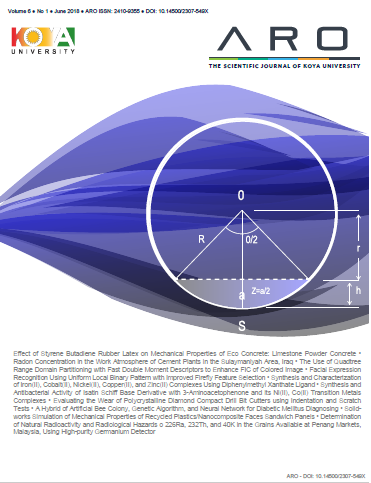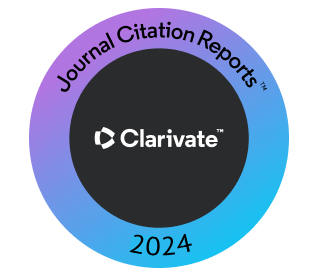Evaluating the Wear of Polycrystalline Diamond Compact Drill Bit Cutters using Indentation and Scratch Tests
Abstract
Abstract–Polycrystalline diamond compact (PDC) drill bits are widely used in oil and gas drilling. The wear of PDC cutters is a major problem during drilling. It leads to severe time losses which affect the overall drilling operation cost. Therefore, it is essential to evaluate the wear tendency for these cutters using predictive approaches. The present research is focused on studying the wear mechanisms of PDC cutters and the effect of their mechanical properties on the extent of wear. The volume of wear for the PDC cutters was determined experimentally using micro- and nano-scratch tests by implementing an approach based on the geometry of the removed material after micro- and nano-scratch tests. The experimental wear results were compared to the predictions from current models in the literature.Various wear models are evaluated for micro- and nano-scratch tests on both layers of the PDC samples. The study shows that the wear of the PDC cutters can be predicted from the material mechanical properties, applied load, sliding distance, and hardness of the PDC cutters. The study could be extended for the evaluation of wear intensity of PDC cutters from various manufactures without using the previous techniques of abrasion testing.
Downloads
References
Archard, J.F., 1953. Contact and Rubbing of Flat Surfaces. Journal of Applied Physics, 24(8), pp.981-988.
Beake, B.D., Vishnyakov, V.M., Valizadeh, R. and Colligon, J.S., 2006. Influence of mechanical properties on the nano-scratch behaviour of hard nanocomposite TiN/Si 3 N 4 coatings on Si. Journal of Physics D: Applied Physics. 39(7), pp.1392-1397.
Beake, B.D., Goodes, S.R. and Shi, B., 2009. Nanomechanical and nanotribological testing of ultra-thin carbon-based and MoST films for increased MEMS durability. Journal of Physics D: Applied Physics. 42(6), pp.065301.
Beake, B.D., Harris, A.J. and Liskiewicz, T.W., 2013. Review of recent progress in nano-scratch testing. Tribology - Materials, Surfaces and Interfaces. 7(2), pp.87-96.
Beake, B.D., Shi, B. and Sullivan, J.L., 2011. Nanoscratch and nanowear testing of TiN coatings on M42 steel. Tribology-Materials, Surfaces and Interfaces. 5(4), pp.141-147.
Bellin, F., Dourfaye, A., King, W. and Thigpen, M., 2010a. The current state of PDC bit technology. World Oil. 9, pp.53-58.
Bellin, F., Dourfaye, A., King, W. and Thigpen, M., 2010b. The current state of PDC bit technology. World Oil, 2010, pp.41-46.
Bellin, F., Dourfaye, A., King, W. and Thigpen, M., 2010c. The current state of PDC bit technology. World Oil, 2010, pp.67-71.
Couvy, H., Lahiri, D., Chen, J., Agarwal, A. and Sen, G., 2011. Nanohardness and Young’s modulus of nanopolycrystalline diamond. Scripta Materialia. 64(11), pp.1019-1022.
CSM Instruments., 2002. Overview of Mechanical Testing Standards. Available from: http://www.csm-instruments.com/en/webfm_send/42. [Last accessed on 2015 Jun 29].
Dubrovinskaia, N., Dub, S., Dubrovinsky, L., 2006. Super wear resistance of aggregated diamond nanorods. Nano Lett. 6(4), pp.824-826.
Fang, Z., Griffo, A., White, B., Belnap, D., Hamilton, R., Portwood, G.P., Cox, P., Hilmas, G. and Bitler, J., 2001.Chipping resistant polycrystalline diamond and carbide composite materials for roller cone bits. In: The SPE Annual Technical Conference and Exhibition. New Orleans, Louisiana. USA.
Geoffroy, H., Minh, D.N., Bergues, J. and Putot, C., 1999. Interaction between Rock and Worn PDC Bit: Theory and Experiments. In: The 9th International Society for Rock Mechanics Congress. Paris. France.
Hutchings, I.M., 1992. Tribology: Friction and Wear of Engineering Materials. Edward Arnold, London.
Mori, N., Moriguchi, H., Ikegaya, A., Shioya, Y. and Ohbi, K., 2003.
Development of Highly Durable Materials for Drilling Hard and Abrasive Rocks. In: The SPE Asia Pacific Oil and Gas Conference and Exhibition. 15-17 April 2000, Jakarta. Indonesia.
Mouritz, A.P. and Hutchings, I.M., 1991. The Abrasive Wear of Rock Drill Bit Materials. Society of Petroleum Engineers, Paper SPE 24222.
Ndlovu, S., 2009. The wear properties of Tungsten Carbide-Cobalt Hardmetals from the Nanoscale up to the Macroscopic Scale. APhD Dissertation Submitted to the Materials Science and Engineering, University of Erlangen-Nuremberg, Germany.
Ning, Z. and Ghadiri, M., 2006. Distinct element analysis of attrition of granular solids under shear deformation. Chemical Engineering Science. 61(18), pp.5991-6001.
Osipov, A.S., Bondarenko, N.A., Petrusha, I.A. and Mechnik, V.A., 2010. Drill bits with thermostable PDC inserts. Diamond Tooling Journal. 70(625), pp.31-34.
Available from: http://www.dtj-online.com/userfiles/file/Vol70Num625_31-34. pdf. [Last accessed on 2012 Sep 16].
Rabinowicz, E., 1996. Friction and Wear of Materials. 2nd ed. John Wiley and Sons, Toronto, ON.
Richardson, R.C., 1968. The wear of metals by relatively soft abrasives. Wear. 11(4), pp.245-275.
Sumiya, H. and Irifune, T., 2004. Indentation hardness of nano-polycrystalline diamond prepared from graphite by direct conversion. Diamond and Related Materials. 13(10), pp.1771-1776.
Tze-Pin, L., Hood, M., Cooper, G. and Xiaohong, L., 1992. Wear and failure mechanisms of polycrystalline diamond compact bits. Wear. 156(1), pp.133-150.
Yahiaoui, M., Gerbaud, L., Paris, J.Y., Denape, J. and Dourfaye, A., 2013. Astudy on PDC drill bits quality. Wear. 298-299, pp.32-41.
Zacny, K. 2012. Fracture and fatigue of polycrystalline-diamond compacts. SPE Drilling and Completion 27, pp.145-157.
Copyright (c) 2018 Rafid K. Abbas, Ali R. Hassanpur

This work is licensed under a Creative Commons Attribution-NonCommercial-ShareAlike 4.0 International License.
Authors who choose to publish their work with Aro agree to the following terms:
-
Authors retain the copyright to their work and grant the journal the right of first publication. The work is simultaneously licensed under a Creative Commons Attribution License [CC BY-NC-SA 4.0]. This license allows others to share the work with an acknowledgement of the work's authorship and initial publication in this journal.
-
Authors have the freedom to enter into separate agreements for the non-exclusive distribution of the journal's published version of the work. This includes options such as posting it to an institutional repository or publishing it in a book, as long as proper acknowledgement is given to its initial publication in this journal.
-
Authors are encouraged to share and post their work online, including in institutional repositories or on their personal websites, both prior to and during the submission process. This practice can lead to productive exchanges and increase the visibility and citation of the published work.
By agreeing to these terms, authors acknowledge the importance of open access and the benefits it brings to the scholarly community.















 ARO Journal is a scientific, peer-reviewed, periodical, and diamond OAJ that has no APC or ASC.
ARO Journal is a scientific, peer-reviewed, periodical, and diamond OAJ that has no APC or ASC.